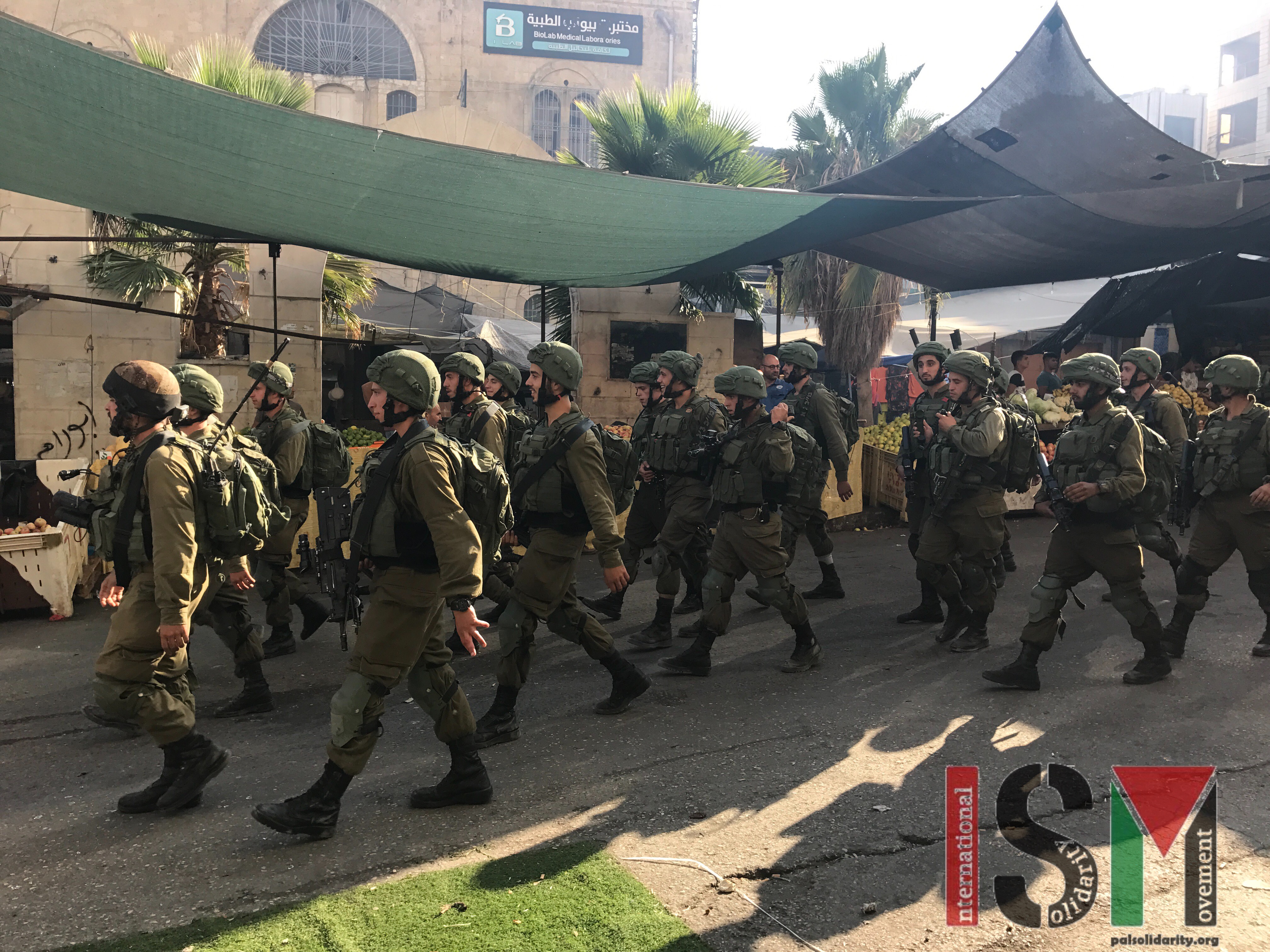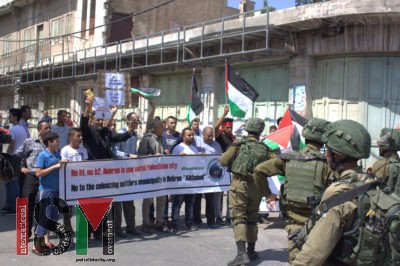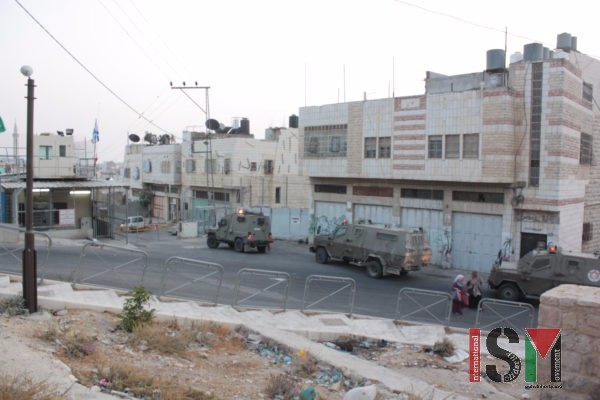Category: Hebron
-
Arrests of young Palestinians continue in occupied Hebron
20th September 2017 | International Solidarity Movement, al-Khalil team | Hebron, occupied Palestine During the patrol around the old city, on Wednesday the 20th of September at 4 PM, the Al-Khalil team ran into a group of about 20 soldiers and followed them through the market in the Old City. The armed forces surprised the…
-
Friday Protests Against Newly Planned Settler Municipality
15th September 2017 | International Solidarity Movement, al-Khalil team | Hebron, occupied Palestine On Friday the 15th of September, after noon prayer, a Palestinian demonstration started by the Ali al-Baka mosque within the old city of Hebron. People gathered to protest against the establishment of a new settler municipality within the H2 area of the…
-
Israeli military presence in South-Eastern Hebron results in revolt from civilians.
14th September 2017 | International Solidarity Movement, Al-Khalil team | Hebron, occupied Palestine On Thursday evening, at around 6:40pm, the Al-Khalil team was patrolling the city and came across Israeli forces stationed by the Tareq roundabout, in the Altahta area south of the city. The military teams consisted of two groups of around six soldiers,…



